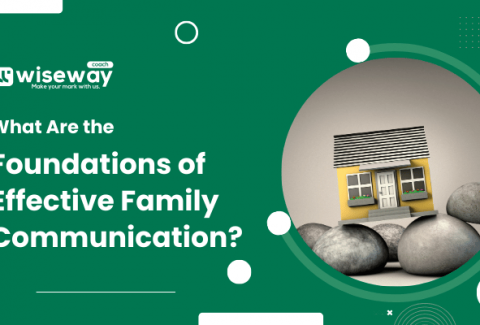How Can You Resolve Family Conflicts Peacefully?
September 25, 2024 2024-10-09 10:17How Can You Resolve Family Conflicts Peacefully?
Family conflicts are a natural part of relationships, but how you handle them can make a significant difference in maintaining harmony and strengthening bonds. Resolving conflicts peacefully involves understanding the root causes of disputes, communicating effectively, and working together to find solutions. Here’s a comprehensive guide on how to approach and resolve family conflicts in a constructive and harmonious manner.
1. Understand the Root Causes
Identify Underlying Issues
Conflicts often stem from deeper, underlying issues beyond the immediate problem. Take time to explore the root causes of the conflict by reflecting on the emotions, values, and needs involved. Consider whether past experiences, unmet needs, or unresolved issues contribute to the current disagreement. Understanding these underlying factors can provide insight into the true nature of the conflict and guide more effective resolution strategies.
Acknowledge Emotions
Recognizing and validating emotions is crucial in resolving conflicts peacefully. Encourage family members to express their feelings openly and listen empathetically. Acknowledge the emotions involved without dismissing or minimizing them. Validating each other’s feelings helps create a supportive environment where everyone feels heard and respected.
2. Practice Effective Communication
Use Active Listening
Active listening is essential for resolving conflicts peacefully. Focus on what the other person is saying without interrupting or formulating your response while they are speaking. Show that you are engaged through verbal and nonverbal cues, such as nodding and maintaining eye contact. Reflect on their words and ask clarifying questions if needed. Active listening helps ensure that all perspectives are understood and valued.
Express Yourself Clearly and Calmly
When sharing your own perspective, use clear and concise language. Avoid vague statements or accusations, and focus on expressing your feelings and needs. Use “I” statements to communicate how you feel about the situation without placing blame. For example, instead of saying “You never listen to me,” try “I feel frustrated when I’m not heard during our discussions.” Calm and respectful communication fosters a more constructive dialogue.
3. Find Common Ground
Identify Shared Goals
Finding common ground is key to resolving conflicts peacefully. Identify shared goals or interests that both parties can agree on. This might include the desire for a harmonious family environment or mutual respect. By focusing on common objectives, you can work together towards solutions that benefit everyone involved.
Compromise and Negotiate
Be willing to compromise and negotiate to reach a resolution. Consider the needs and concerns of all parties and be open to finding middle ground. Negotiation involves exploring various options and making adjustments to accommodate different perspectives. Strive for solutions that address the core issues while being fair and acceptable to everyone involved.
4. Implement Conflict Resolution Techniques
Set Ground Rules
Establishing ground rules for conflict resolution can help maintain a respectful and productive conversation. Agree on guidelines such as no interrupting, avoiding personal attacks, and staying focused on the issue at hand. Setting these rules creates a structured environment for resolving conflicts and helps prevent escalation.
Use Mediation if Necessary
If conflicts become too challenging to resolve independently, consider using mediation. A neutral third party, such as a family counselor or mediator, can facilitate discussions and help guide the resolution process. Mediation provides an impartial perspective and can assist in finding mutually acceptable solutions.
5. Focus on Long-Term Solutions
Develop an Action Plan
Once a resolution is agreed upon, develop a clear action plan to address the conflict and prevent future issues. Outline specific steps that each party will take to implement the solution and ensure that the agreement is upheld. An action plan provides structure and accountability, helping to avoid recurring conflicts.
Monitor Progress and Adjust as Needed
Regularly monitor progress to ensure that the resolution is effective and that any remaining issues are addressed. Be open to adjusting the plan if necessary and maintain ongoing communication to prevent misunderstandings. Continuous evaluation and adaptation help sustain harmony and address any emerging concerns.
6. Build a Stronger Family Bond
Foster Positive Interactions
Building a stronger family bond involves fostering positive interactions and maintaining a supportive environment. Engage in activities that promote connection and strengthen relationships, such as family dinners, outings, or shared hobbies. Positive interactions help reinforce trust and understanding, making it easier to navigate conflicts when they arise.
Encourage Regular Communication
Promote regular communication within the family to address issues before they escalate. Create opportunities for open dialogue and encourage family members to share their thoughts and feelings regularly. Consistent communication helps prevent misunderstandings and keeps everyone informed and connected.
7. Practice Forgiveness and Letting Go
Embrace Forgiveness
Forgiveness is a crucial component of resolving conflicts peacefully. Letting go of past grievances and focusing on moving forward helps release emotional burdens and fosters a healthier family dynamic. Encourage family members to practice forgiveness and to view conflicts as opportunities for growth and understanding.
Let Go of Resentment
Holding onto resentment can hinder conflict resolution and damage relationships. Work towards letting go of negative feelings and focusing on positive outcomes. Embrace a mindset of collaboration and mutual respect to build stronger, more resilient family connections.
Conclusion
Resolving family conflicts peacefully involves understanding underlying issues, practicing effective communication, and finding common ground. By implementing conflict resolution techniques, focusing on long-term solutions, and fostering positive interactions, families can navigate disagreements constructively. Embracing forgiveness and letting go of resentment further strengthens family bonds and creates a harmonious environment. With these strategies, families can build a foundation of trust, respect, and collaboration, ensuring a supportive and loving home for everyone.

